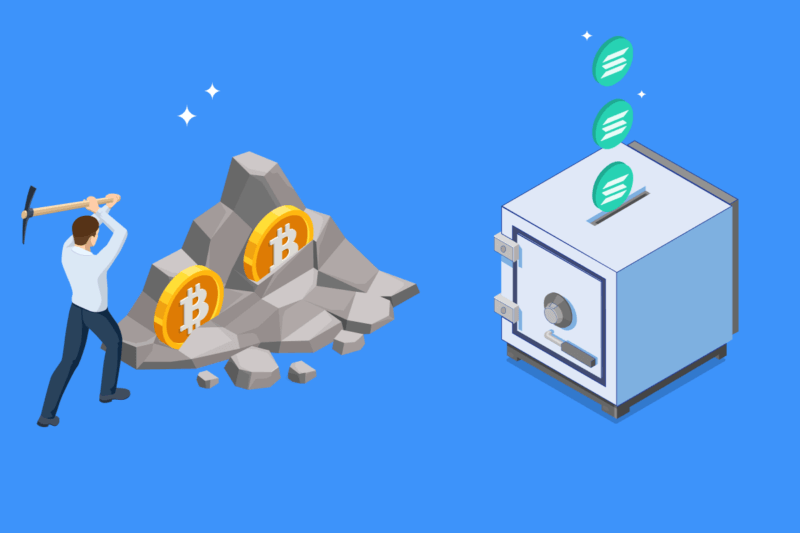what is proof-of-work?

Understanding Proof-of-Work: A Comprehensive Guide
Introduction to Proof-of-Work
Proof-of-Work (PoW) is a foundational concept in the world of cryptocurrencies. It plays a crucial role in ensuring the security and integrity of blockchain networks. Originally proposed by Cynthia Dwork and Moni Naor in 1993, it gained prominence with the advent of Bitcoin.
How Proof-of-Work Operates
Proof-of-Works requires participants, known as miners, to solve complex mathematical puzzles. These puzzles are computationally intensive, requiring significant processing power. Once solved, the miner broadcasts the solution to the network, which validates the correctness. This process secures the blockchain, preventing double-spending and ensuring that transactions are legitimate.
Mining and Hash Functions
Miners use hash functions to solve PoW puzzles. A hash function takes an input and produces a fixed-size string of characters. The challenge lies in finding a hash that meets certain criteria, often starting with a specific number of zeroes. This process is random, requiring multiple attempts before success. Each attempt is called a hash computation.
The Role of Difficulty in Proof-of-Work
To maintain a consistent block creation time, PoW systems adjust the difficulty of puzzles. As more miners join the network, the difficulty increases, ensuring that blocks are produced at a steady rate. This self-adjusting mechanism keeps the blockchain secure and operational.
Energy Consumption Concerns
One major criticism of Proof-of-Works is its high energy consumption. The computational power required to solve PoW puzzles results in significant electricity usage. This has raised environmental concerns, leading to debates about the sustainability of PoW-based cryptocurrencies.
Advantages of Proof-of-Work
Despite its energy demands, PoW offers several benefits. It provides robust security, making it difficult for malicious actors to alter the blockchain. The decentralized nature of mining prevents single points of failure, enhancing the network’s resilience.
Limitations of Proof-of-Work
However, PoW is not without its limitations. The high energy consumption is a major drawback. Additionally, as mining becomes more competitive, it can lead to centralization, with mining power concentrated in the hands of a few entities. This undermines the decentralized ethos of blockchain technology.
Alternatives to Proof-of-Work
Due to these concerns, alternatives like Proof-of-Stake (PoS) are being explored. PoS reduces energy consumption by allowing validators to create new blocks based on the number of coins they hold and are willing to “stake” as collateral. This approach aims to offer similar security with less environmental impact.
Conclusion: The Future of Proof-of-Work
Proof-of-Works has been instrumental in the success of cryptocurrencies like Bitcoin. Its ability to secure networks and validate transactions is unmatched. However, the environmental impact and potential for centralization pose significant challenges. As the cryptocurrency landscape evolves, finding sustainable solutions to these issues will be critical.
Proof of Works remains a cornerstone of blockchain technology. Understanding its mechanics and implications is essential for anyone interested in the future of digital currencies.























 Bitcoin
Bitcoin  Ethereum
Ethereum  Tether
Tether  XRP
XRP  Solana
Solana  USDC
USDC  Cardano
Cardano  Dogecoin
Dogecoin  TRON
TRON  Lido Staked Ether
Lido Staked Ether  Wrapped Bitcoin
Wrapped Bitcoin  Pi Network
Pi Network  LEO Token
LEO Token  Hedera
Hedera  Chainlink
Chainlink  USDS
USDS  Wrapped stETH
Wrapped stETH  Stellar
Stellar  Avalanche
Avalanche  Sui
Sui  Shiba Inu
Shiba Inu  Litecoin
Litecoin  Bitcoin Cash
Bitcoin Cash  Toncoin
Toncoin  MANTRA
MANTRA  Polkadot
Polkadot  Ethena USDe
Ethena USDe  WETH
WETH  Binance Bridged USDT (BNB Smart Chain)
Binance Bridged USDT (BNB Smart Chain)  Bitget Token
Bitget Token  Hyperliquid
Hyperliquid  WhiteBIT Coin
WhiteBIT Coin  Wrapped eETH
Wrapped eETH  Monero
Monero  Lombard Staked BTC
Lombard Staked BTC  Uniswap
Uniswap  sUSDS
sUSDS  Dai
Dai  Aptos
Aptos  NEAR Protocol
NEAR Protocol  Aave
Aave  Ethereum Classic
Ethereum Classic  Ondo
Ondo  Internet Computer
Internet Computer  Pepe
Pepe  OKB
OKB  Gate
Gate  Coinbase Wrapped BTC
Coinbase Wrapped BTC  Mantle
Mantle